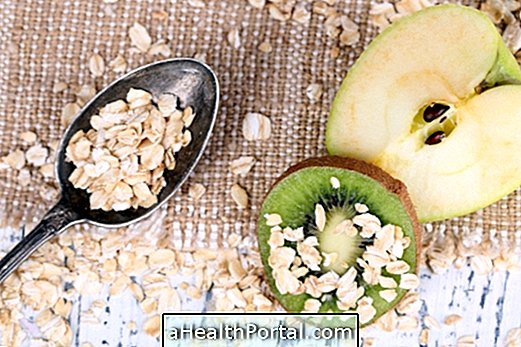Sorghum flour has a light color, a soft texture and a neutral flavor, similar to wheat flour, besides being richer in fiber and protein than rice flour, for example, being a great option to be used in recipes breads, pastries, pastas and biscuits.
Another advantage is that sorghum is a gluten-free grain, which can be used by people who have Celiac Disease or gluten sensitivity, being a food very used to bring more nutrients to all types of diet. Find out what foods contain gluten.

The main benefits of this grain are:
- Reducing gas production and abdominal discomfort in people with gluten sensitivity or intolerance;
- Improve intestinal transit by being rich in fiber;
- Help control diabetes because the fibers help prevent a large rise in blood sugar;
- Prevent diseases such as cancer, diabetes and cardiovascular disease by being rich in anthocyanins, which are potent antioxidants;
- Help lower cholesterol by being rich in policosanol;
- Helping to lose weight, due to the low glycemic index and high content of fibers and tannins, which increases satiety and decreases fat production;
- Fight inflammation by being rich in phytochemicals.
To get these benefits, it is important to consume the whole sorghum flour, which can be found in supermarkets and nutritional product stores.
Nutritional composition
The following table shows the nutritional composition of 100 g of whole sorghum flour.
| Whole Wheat Flour | |
| Energy | 313, 3 kcal |
| Carbohydrate | 62.7 g |
| Protein | 10.7 g |
| Fat | 2.3 g |
| Fiber | 11 g |
| Iron | 1.7 g |
| Phosphor | 218 mg |
| Magnesium | 102.7 mg |
| Sodium | 0 mg |
About 2 and a half tablespoons of sorghum flour is about 30g, and can be used in cooking by replacing wheat or rice flour and can be included in bread, cake, pasta, and sweet recipes.
Tips for replacing wheat flour with sorghum
When replacing wheat flour with sorghum flour into bread and cake recipes, the dough tends to get drier and crumbly, but you can use the following strategies to maintain proper consistency of the recipe:
- Add 1/2 tablespoon of cornstarch to each 140 g of sorghum flour in recipes for sweets, cakes and biscuits;
- Add 1 tablespoon of cornstarch to each 140 g of sorghum flour in bread recipes;
- Add 1/4 more fat than the recipe calls for;
- Add 1/4 more of yeast or baking soda than the prescription asks for.
These tips will help keep moisture in the dough and make it grow properly.
Integral Sorghum Bread Recipe
This bread can be used in snacks or at breakfast and, because it contains little sugar and is high in fiber, can also be consumed by people with controlled diabetes.

Ingredients:
- 3 eggs
- 1 cup of milk tea
- 5 tablespoons extra virgin olive oil
- 2 cups whole-grain sorghum flour
- 1 cup oatmeal flakes
- 3 tablespoons flaxseed flour
- 1 tablespoon brown sugar
- 1 teaspoon of sea salt
- 1 tablespoon baking powder
- 1 cup of sunflower seed and / or pumpkin
Method of preparation:
In a container, mix all the dried ones except the brown sugar. In the blender, beat all the liquids with the brown sugar. Add the liquid mixture to the dry ingredients and stir well until the dough becomes homogeneous, adding the yeast last. Put the dough into a greased bread form and distribute the sunflower and pumpkin seeds on top. Let stand for about 30 minutes or until the dough doubles in volume. Bake for 40 minutes in a preheated oven at 200ºC.
See more tips on making a gluten-free diet.





















